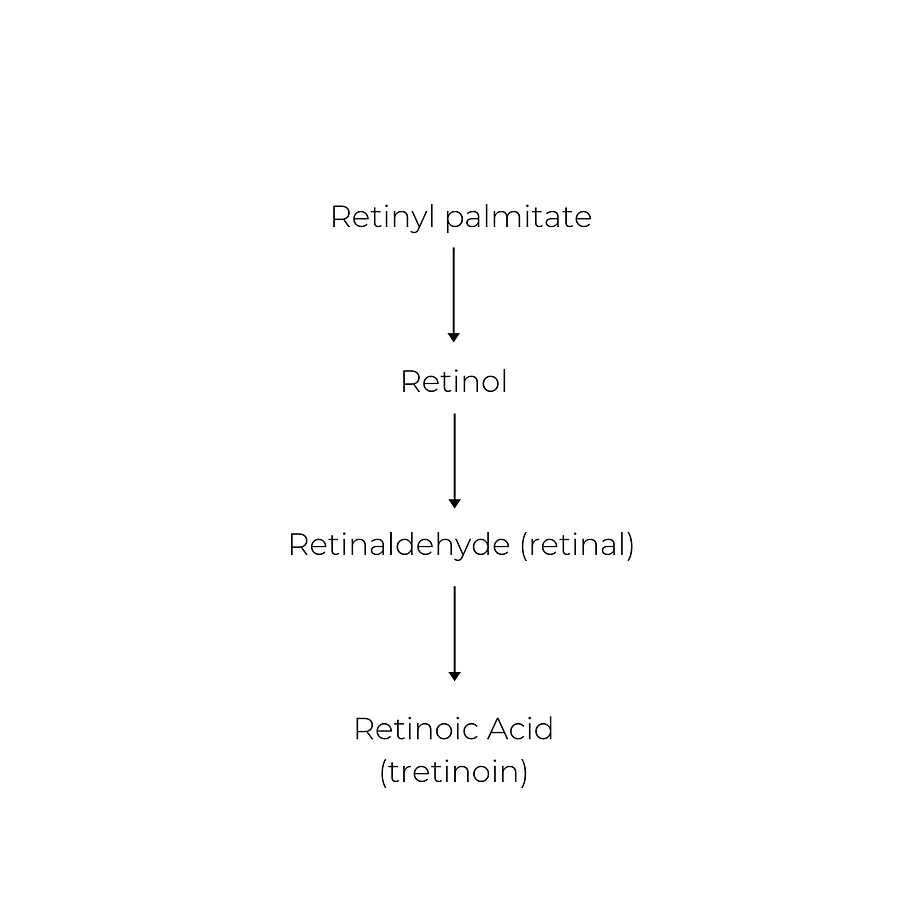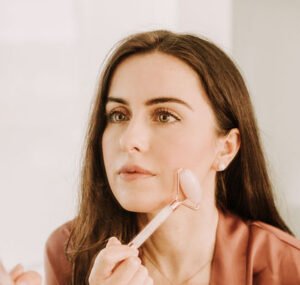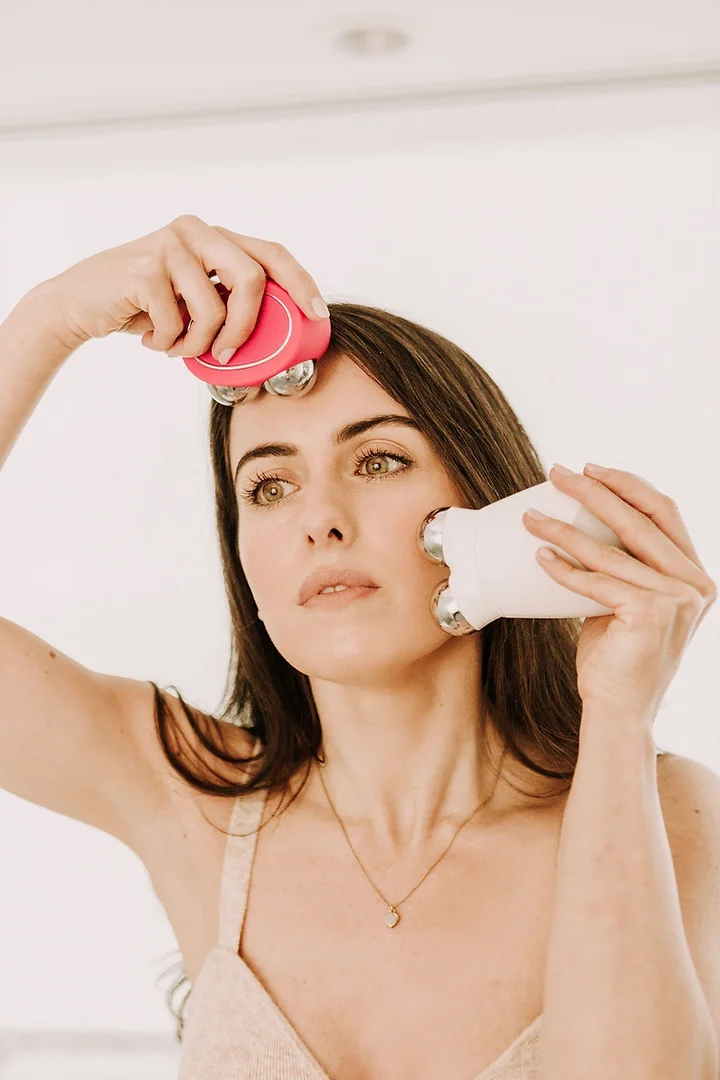What is Vitamin A?
Vitamin A in its most potent form for topical skincare is known as retinoic acid (tretinoin), developed more than 25 years ago to treat acne vulgaris, but then it was accidentally (thank you) discovered it had great benefits in treating signs of ageing on the skin. Vitamin A supports collagen production and thickens the dermal layer(second layer of skin).
Now you’ve probably heard of Retinol, Retinyl palmitate and Retinaldehyde. These commonly known forms alongside Tretinoin (retinoic acid) fall into the group of Retinoids, which is a large group of synthetic and naturally occurring Vitamin A compounds. Unlike Tretinoin, Retinol, retinyl palmitate and Retinaldehyde have to be converted by skin enzymes to Retinoic acid.

The faster the conversion rate to Retinoic acid, the more potent the ingredient will be.
Ok, so that’s the science and you probably think why not just use the purest form Tretinoin with no conversion?!
Retinoic Acid
Retinoic Acid (tretinoin) is available on prescription and can be useful in treating both acne and ageing concerns, but even though it’s the most active form, it has its drawbacks. It can be too aggressive for most people leading to irritated and inflamed skin, which will compromise the skin’s barrier. Long term inflammation in the skin can accelerate ageing.Thanks to the involving science of skincare we now have Retinaldehyde.
Retinaldehyde vs Retinol
Retinaldehyde is the newer retinoid on the market and introduced to the skincare world only within the last ten years. It’s taking the spotlight over more commonly used retinoid, Retinol. While both Retinol and Retinaldehyde stimulate cell turnover and reduce the appearance of fine lines and wrinkles, Retinaldehyde has clinical studies to show it works 11 times faster than its Retinol sister. Retinaldehyde will increase collagen, improve elasticity and repair the skin without compromising it in any way. Retinol on the other hand can be very irritating for a lot of skins leading to inflammation. We want to avoid long term inflammation in the skin; Inflammation causes ageing. This is why Retinaldehyde is my preferred choice of Vitamin A.
Benefits of Vitamin A
- Increases collagen production, reducing fine lines, wrinkles, minimizing pore size and Improves texture
- Regulates an overactive sebaceous gland, and helps to control oil
- Increases cell turnover, revealing healthier skin
- Reduces hyperpigmentation and improves skin tone
- Reduces inflammation, calming acne and rosacea
Collagen Power Peel Vitamin A Professional Treatment
Collagen Power Peel
A Vitamin rich infusion peel working from the inside out. Speeding up the production of new healthy cells, boosts collagen production, fades pigmentation, controls and calms acne breakouts and promotes overall skin health.
60 minutes | $149

Product choices
Calm by Osmosis Skincare MD
Calm contains Retinaldehyde alongside niacinamide, beta-glucan, seven antioxidants and soothing botanicals. Calm is excellent for moderate to sensitive skin types and a good starting point for first time vitamin A users. Calm will rejuvenate the skin, calm and restore the skin’s barrier. Calm stimulates collagen helping to repair a thin dermis.
Strategy The A Retinal Serum
A 3 in 1 powerhouse Retinal serum.
Combining Retinaldehyde alongside barrier supporting ingredients, antioxidants and signalling peptides. The A Retinal serum utilizes an encapsulated delivery system that stabilizes each molecule until safely delivered upon epidermal contact. This advanced delivery system minimizes sensitivity associated with other topical Retinoids.
How to use?
If it’s your first time using Vitamin A, then start with every second night for the first 1-2 weeks and then increase to every night if skin tolerates well. I always recommend using Vitamin A at night rather than in the day. Vitamin A can cause sun sensitivity. Apply Vitamin A after double cleansing and toning the skin, add chosen moisturiser over the top if the skin is drier.
With skin love
Kimberly




